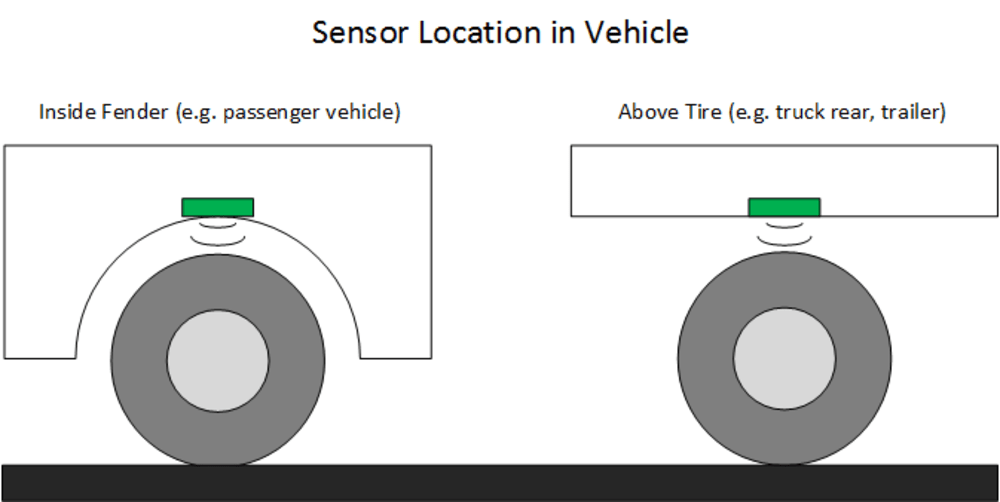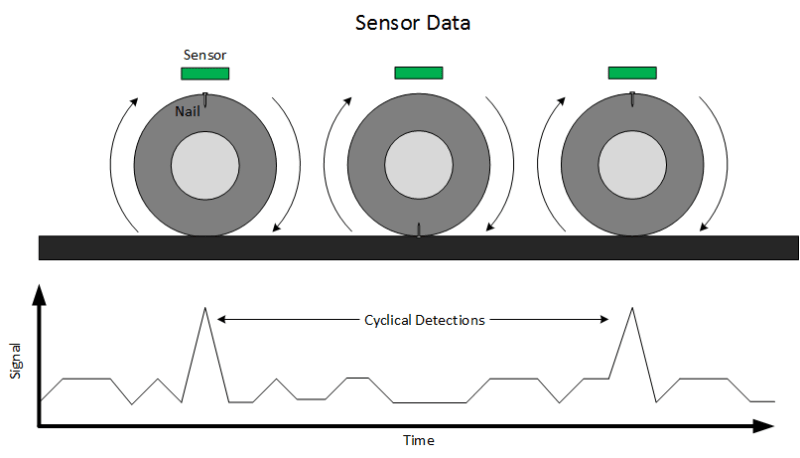It has been estimated that every year, 220 million passenger car tires are punctured in the United States alone. Expand that statistic to include cars and commercial vehicles worldwide, and it becomes apparent that punctured tires is a significant problem.
Tire pressure monitoring sensors (TPMS) attempt to remedy this problem by continually monitoring the tires’ pressure, and alerting the operator in the event of an anomaly. However, this approach only alerts the operator once corrective action must be immediately undertaken. It can often take hours, days, or weeks for a nail to lower the tire pressure enough to trigger an alert. This delay in detection is valuable time that could have been utilized to perform proactive planned maintenance, rather than reactive emergency maintenance.
Early detection of nails and screws can be accomplished through the use of sensors. An appropriate “metal detector” (many varieties will do) is installed in a vehicle, mounted above each of its tires. Then, the signal from the sensor is analyzed to detect any cyclical patterns. The detection is limited in its range, so that it does not pick up spurious signals from other environmental factors, such as the valve stem, wheel-balancing weights, and road debris. Signal processing then accounts for background noise, vehicle suspension, and road conditions to alert the operator the moment foreign debris is acquired. The operator is notified, given them precious time to schedule maintenance and avoid disaster.
An additional advantage over TPMS systems, is that the sensors are not disposable with the tires. They are a permanent installation that will adapt to any new tire installation. These also do not rely on batteries or wireless communication.
This system has a secondary function, this system can function as a tire-theft deterrent. There will be a relatively constant signal to the sensor for a parked car. If a tire is removed from the vehicle without first authorizing the change (e.g. keys in the ignition), the system can sound an alarm as appropriate.
Like this entry?
-
About the Entrant
- Name:Adam Slade
- Type of entry:individual
- Patent status:none





